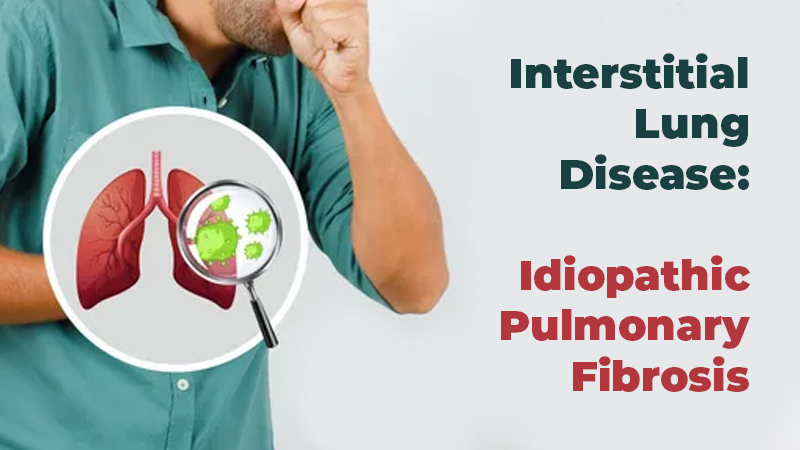What is ILD?
Interstitial lung disease, commonly known as ILD, is a broad terminology used to describe a group of rare conditions that all result in inflammation and scarring of the lung tissue. The most common of these conditions are:
- Idiopathic pulmonary fibrosis
- hypersensitivity pneumonitis
- Sarcoidosis
ILD can also be associated with Auto immune diseases such as rheumatoid arthritis or scleroderma.
ILD rarely can be drug induced, example: Anticancer drugs like Bleomycin.
Idiopathic pulmonary fibrosis (IPF) is a condition in which the lungs become scarred and breathing becomes increasingly difficult.
What causes ILD?
It’s not clear what causes it, but it usually affects people who are around 70 to 75 years old, and is rare in people under 50.
Symptoms of IPF include
- Persistent Dry Cough,
- Progressive Breathlessness on exertion,
- Tiredness
- Loss of appetite and weight loss
- Rounded and swollen fingertips (clubbed fingers).
Patients with IPF usually have Gastro Esophageal Reflux Disease (GERD).
These patients will usually have a Progressive disease causing scarring of lungs and gas exchange units of lungs get damaged, resulting in less oxygen in blood. Eventually, patients become so breathless that they cannot even dress themselves or take bath.
What is the treatment available for ILD?
IPF gets worse over time, although the speed at which this happens is highly variable.
Some people respond well to treatment and remain relatively free of symptoms for many years, while others may get rapidly worse or find the breathlessness debilitating.
Other problems can also sometimes develop, including chest infections, pulmonary hypertension and heart failure.
It’s very difficult to predict how long someone with IPF will survive at the time of diagnosis.
Regular monitoring over time can indicate whether it’s getting worse quickly or slowly.
With the availability of specific treatments which reduce the progression of the disease and early diagnosis, increasing awareness, survival of these IPF patients is around 5 to 7 years from diagnosis.
How is ILD Diagnosed, and Can it be cured?
Diagnosis is usually done by a High Resolution CT Scan of lungs, which shows scarring, honeycombing and shrinking lungs.
There’s currently no cure for IPF, but there are several treatments that can help relieve the symptoms and slow down its progression.
*Treatments* include:
- Self care measures:
- Smoking cessation,
- Eating healthily and exercising regularly
- Medicines to reduce the rate at which scarring worsens: pirfenidone and nintedanib
- Oxygen Supplementation: through a mask – you can do this while you’re at home or while you’re out (Using Ambulatory or portable oxygen concentrators)
- Pulmonary Rehabilitation: exercises to strengthen Upper and lower limbs, respiratory muscles and advice to help you breathe more easily.
- Lung Transplant – this is suitable in a few cases, although donor lungs are rare.
